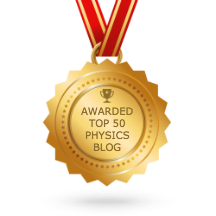 |
| Science Under Siege, by Michael Mann and Peter Hotez. |
In Science Under Siege we seek to provide a succinct yet detailed delineation of the five forces behind the modern-day antiscience movement (the five p’s, as we call them—the plutocrats, the petrostates, the pros, the propagandists, and our press). We draw upon our respective experiences on two different fronts of the war on science to identify and delineate the drivers and their financial backers. We provide a road map for dismantling the antiscience machine, through stories that at times are quite personal but speak to challenges and threats that are broad and sweeping. This book is a warning. But it is also a call to arms. While there is urgency—unlike any we’ve ever known—there is still agency. We can still avert disaster if we can understand the nature of the mounting antiscience threat and formulate a strategy to counter it.In their first chapter they write
We find ourselves facing not just a one-two punch of pandemics and the climate crisis, but a one-two-three punch, with that third punch, antiscience, obstructing the needed response from governments and civil society. The future of humankind and the health of our planet now depend on surmounting the dark forces of antiscience.My favorite chapter was their last one, titled “The Path Forward.” They present a Venn diagram for winning the war against antiscience.
About it they write
One circle describes ways to expand the visibility of scientists, while providing the tools for scientists to better engage with the public. Another characterizes efforts to protect scientists. And the remaining circle emphasizes the battle against the intensifying flow of antiscience disinformation. We propose a framework for accomplishing this tripartite mission.I’m going to adopt this Venn diagram as a guide for my future posts. 1) I will continue to communicate constructively about Intermediate Physics for Medicine and Biology, but in addition I’ll stress how important science is in our society and oppose the forces of antiscience. I also will try to fulfill this role in my “Bob Park’s What’s New” series that I also publish weekly here. 2) I will search out and attempt to debunk and defeat disinformation. I’ve been trying to do this all along, but this goal is more urgent now. 3) I’ll support scientists. I can’t do much to support them financially or materially, but in this blog I can take on the role of cheerleader-in-chief and provide moral support, especially to those who are attacked by the forces of antiscience.
Mann and Hotez adopt a strident and pugnacious tone in Science Under Siege. Is it justified? It is. I truly believe that there is a Republican War on Science. I believe the forces of antiscience are currently winning this war. And I am certain we must oppose antiscience with all our resources. Particularly as a retired scientist, I have an obligation to fight antiscience for the sake of the next generation of scientists. And as a new grandfather, I must oppose antiscience for the sake of my grandson and all the others of his generation.
I’m going to end by repeating some inspiring words that Mann and Hotez feature. They’re from a commentary in the Journal of Virology titled “The Harms of Promoting the Lab Leak Hypothesis for SARS-CoV-2 Origins Without Evidence” (Volume 98, Article Number e01240–24, 2024). I suggest you read the entire article (it’s not long), but below is the excerpt Mann and Hotez quote.
Science is humanity’s best insurance against threats from nature, but it is a fragile enterprise that must be nourished and protected. What is now happening to virology is a stark demonstration of what is happening to all of science. It will come to affect every aspect of science in a negative and possibly dangerous way, as has already happened with climate science. It is the responsibility of scientists, research institutions, and scientific organizations to push back against the anti-virology attacks, because what we are seeing now may be the tip of the proverbial iceberg.
Book Talk: Michael E. Mann and Peter J. Hotez — Science Under Siege








